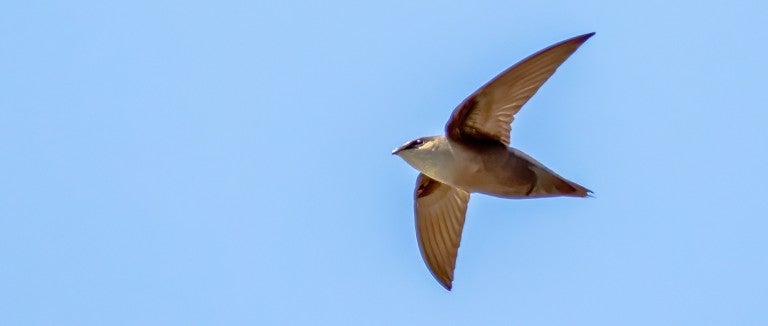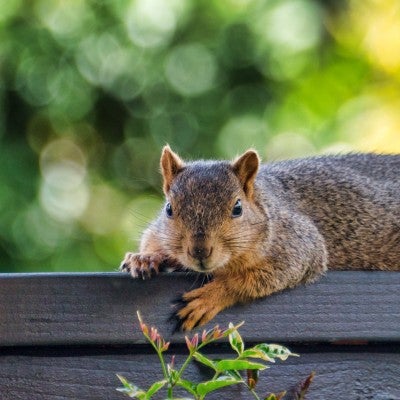Anyone who knows chimney swifts, with their cigar-shaped bodies almost constantly aloft, chattering, sweeping insects out of the sky, will wonder why they need to be mentioned in a work on resolving animal conflicts. The reason for this is not because they cause any special problem for us, but because we cause problems for them.
Once, swifts nested in hollow trees—the aged giants of the old growth forest. These trees were lost when the land was cleared for farming, which might have had a devastating impact on swifts except that humans quickly put up houses with stone and mortared brick chimneys that were almost exact replicas of the nesting trees.
Today we encourage the practice of chimney-capping to prevent conflicts with other species, and build many houses without fireplaces and chimneys taking nesting habitat away from these birds.
Common problems
Today, many houses are built with chimneys that use smaller metal flue pipes rather than clay liners. These metal flues can sometimes be death traps for animals, who cannot grip the slippery metal and may even fall into the fireplace.
Swifts nests are small cup-shaped structures constructed of small twigs and glued to the chimney wall with saliva. They are not a fire hazard, being far too small for that, but should always be removed after the birds have left in the fall. This does the swifts a favor, both by removing bird parasites and the nest structure itself, which might be used by returning swifts, but could be unstable enough to collapse during the nesting period. Swifts do tend to return to the same nesting site year after year, if available.
Solutions
The rules regarding swifts in chimneys are simple. First, delay the annual cleaning until after young have left the nest. Although you may hear the noises of young birds as they beg for food, these are only temporary and should be tolerated. Ask your chimney sweep to come back in the fall if swifts are in occupancy earlier in the season. Professional sweeps should know that swifts are protected under the Migratory Bird Treaty Act, and anyone who knowingly destroys birds or nests that might contain eggs or young can be fined or penalized. Finally, chimneys lined with metal should always be capped, as birds that enter these can easily become trapped.
Resources
Margaret Whittemore’s Chimney Swifts and Their Relatives. (1981, Jackson, MI: Nature Book Publishers) is a delightful account of these birds and their Old and New World relatives, full of interesting facts and historical information.
Anyone interested in swifts and seeking more information about swifts can contact the Driftwood Wildlife Association at 1206 West 38th, Suite1105, Austin, TX 78705, chimneyswifts.org. The association publishes a newsletter (“Chateura”) that provides useful information on these birds and how to help conserve and protect them. It also provides building plans for the swift houses mentioned above.
One approach to dealing with diminishing nesting habitat for swifts is being undertaken by the Driftwood Wildlife Association, Texas Partners in Flight, and the Nongame Urban Program of the Texas Parks and Wildlife Department. The North American Chimney Swift Nest Site Research Project designs and tests alternate nesting structures for swifts.

